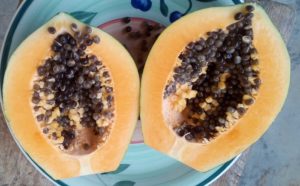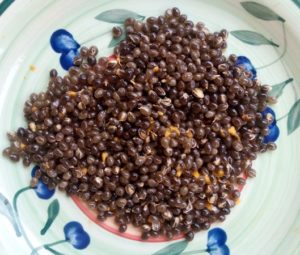Click hereContact our email Address for Donation Here
OUR FACEBOOK PAGE CLICK HERE
CLICK HERE TO JOIN OUR WHATAPP GROUP
To formulate feeds, farmers have to use the Pearson Square method. In this method, the digestible crude protein (DCP) is the basic nutritional requirement for any feed preparation for all animals and birds.
Now, assuming that a farmer wants to make feed for their chicken using this method, they have to know the crude protein content of each of the ingredients they want to use to make their feed.
The following are the DCP values for each of the common ingredients used in feed making:
Whole maize — 8.23%
Soya — 45%
Fishmeal (omena) — 55%
Maize bran — 7%
Sunflower — 35%
Each category of chicken has its nutritional requirement. For example, if we want to make feed for layers, the feed should have at least 18 per cent crude protein.
If one was to formulate feed for layers, then they would have to calculate the percentage of DCP in each of the ingredients they want to use to ensure that the total crude protein content is at least 18 per cent.
Therefore, to make a 70kg bag of feed for layers, a farmer would require the following ingredients:
34kg of whole maize
12kg of soya
8kg of omena (fishmeal)
10kg of maize bran
6kg of lime (as a calcium source)
To find out if all the above ingredients meet this standard of 18% crude protein, a farmer can do a simple calculation as follows:
Whole maize — 34kg x 8.23 ÷100 = 2.80 %
Soya — 12kg x 45kg ÷ 100 = 5.40 %
Omena — 8 kg x 55kg ÷ 100 = 4.40 %
Lime — 6 kg x 0 kg ÷ 100 = 0.00%
Total % of crude protein = 13.30%
To get the total crude protein percentage of all these ingredients in a 70kg bag of feed, the farmer should take this crude protein content of the combined ingredients, divide by 70kg and multiply by 100, thus — 13.30 ÷70 ×100 = 19%; this shows that the crude protein content of the above feed formulation is 19%, which is quite adequate for layers.
To ensure the chicken to get all they need in terms of nutrients such as vitamins, minerals and amino acids, you need these additives in their standard quantities.
In order to make it even simpler for farmers who would wish to make their own feeds, below are feed formulations for each category of chickens and stage of growth already worked out such that all the farmer needs is to buy the ingredients and mix them:
Making a 70 kg layers of layers chick mash (1-4 weeks)
Growing chicks require feed with Digestible Crude Protein (DCP) of between 18 to 20 per cent. The following formulation can be used to make a 70kg bag of layers chick mash:
Ingredients
31.5kg of whole maize
9.1kg of wheat bran
7.0kg of wheat pollard
16.8 kg of sunflower (or 16.8 kg of linseed)
1.5kg of fishmeal
1.75kg of lime
30g of salt
20g of premix Amino acids
70g of tryptophan
3.0g of lysine
10g of methionine
70 g of Threonine
50g of enzymes
60g of coccidiostat
50g of toxin binder
Making a 70 kg bag of growers mash (4 to 8 weeks)
Growers (pullets or young layers) should be provided with feed having a protein content of between 16 and 18 per cent. Such feed makes the young layers to grow fast in preparation for egg laying:
10kg of whole maize
17kg of maize germ
13kg of wheat pollard
10kg of wheat bran
6kg of cotton seed cake
5kg of sunflower cake
3.4kg of soya meal
2.07kg of lime
700g of bone meal
3kg of fishmeal
Additives
14g of salt
1g of coccidiostat
18g of Pre-mix
1g of zinc bacitracitrach
7g of mycotoxin binder
Making a 70 kg bag of layers’ mash (18 weeks and above)
Ingredients
34kg of whole maize
12kg of Soya
8kg of fishmeal
10kg of maize bran, rice germ or wheat bran
6kg of lime
Amino acids
175g premix
70g lysine
35g methionine
70kg Threonine
35g tryptophan
50g toxin binder
Layer feed should contain a Digestible Crude Protein (DCP) content of between 16-18 per cent.
The feed should contain calcium (lime) for the formation of eggshells (laying hens that do not get enough calcium will use the calcium stored in their own born tissue to produce eggshells).
Layer feed should be introduced at 18 weeks.
Formulating a 70 kg bag of broiler feed
Broilers have different feed requirements in terms of energy, proteins and minerals during different stages of their growth. It is important that farmers adapt feed rations to these requirements for maximum production.
Young broilers have a high protein requirement for the development of muscles, feathers, etc. As the broilers grow, their energy requirements for the deposit of fat increase and their protein requirements decrease.
They therefore require high protein content in their starter rations than in the grower and finisher rations.
Broilers should have feed that has between 22 -24 per cent DCP. The following guidelines can help the farmer to make the right feed at each stage of growth:
Broiler starter feed (1-4 weeks)
40kg of whole maize
12kg of fishmeal (or omena)
14kg of soya bean meal
4kg of lime
70g of premix
Amino acids
35g of lysine
35g of Threonine
Preparing broiler Finisher feed (70kg)
10kg of whole maize
16.7kg of maize germ
13.3kg of wheat pollard
10 kg wheat bran
6 kg of cotton seed cake
4.7kg of sunflower cake
3kg of fishmeal 2kg of lime
3.4kg of soya meal
40g of bone meal
10g of grower PMX
5g of salt
5g of coccidiostat
5g of Zincbacitrach
NOTE: For farmers who have more than 500 chickens, it is advisable to make 1 ton of feed at once (There are 14 bags of feed in one ton).
Therefore, to make 1 tonne of feed, all a farmer needs is to multiply each of the ingredients by 14. Ensure that all the feed you make will last for one month and not longer — this ensures the feed remains fresh and safe for chickens. Any feed that lasts more than one month may deteriorate in quality and can affect your chickens.
Daily feed requirements for each growth stage
Farmers should maintain the right feed quantities for chicken at each stage of growth as shown below:
— An egg-laying chicken requires 130-140g of feed per day.
— A chick requires a minimum 60g per day. If they finish their daily rations, give them fruit and vegetable cuttings to ensure they feed continuously.
— Young chickens (or pullets) which are about to start laying eggs should be fed 60g for 2 and ½ months and then put on layer diet (140g per day). Supplement the feed with vegetables, edible plant leaves and fruit peelings in addition to their feed rations.
— Broiler chicks require 67g per day. Broiler finishers require 67g of feed per day to the day of slaughter.
— Chickens are very sensitive to aflatoxins- never use rotten maize (maozo) while making feeds.
Where to buy ingredients
Farmers who need raw materials for feed making including feed additives (pre-mixes and amino acids) can order them from agroveterinary shops nearest to them.
There are also companies doing calibration services for farmers who wish to make feeds in large scale farming enterprises and even for any farmer who requires these services.
Buy quality fishmeal from reputable companies. If omena is used, the farmers must be sure of its quality; most of the omena in the open-air markets may be contaminated. Farmers are advised to go for soya meal if they cannot get good quality omena.
Always mix the micronutrients (amino acids) first before mixing them with the rest of the feed.
For mixing, farmers are advised to use a drum mixer (many jua kali artisans can make one). Never use a shovel to mix feed because the ingredients will be unevenly distributed.
Important: To improve on the feed quality, farmers making their own feeds should always have it tested to ensure the feed is well balanced.
Follow this blog to get updated
Thanks


















